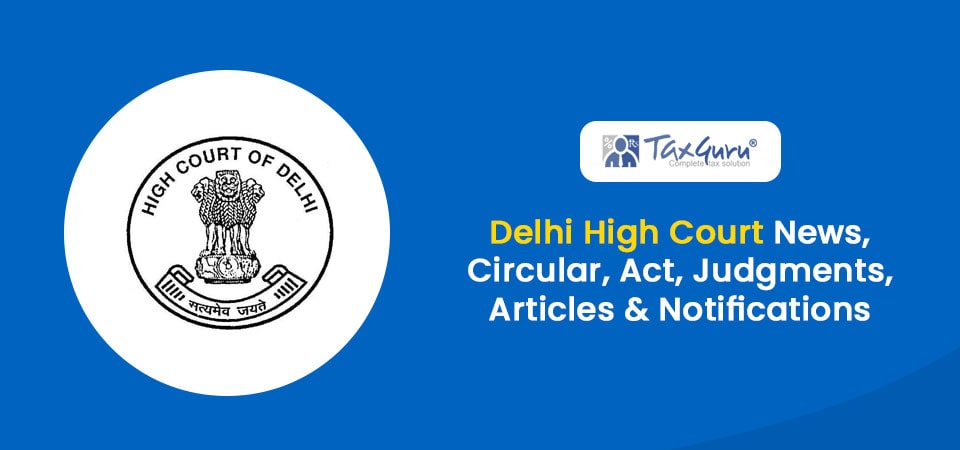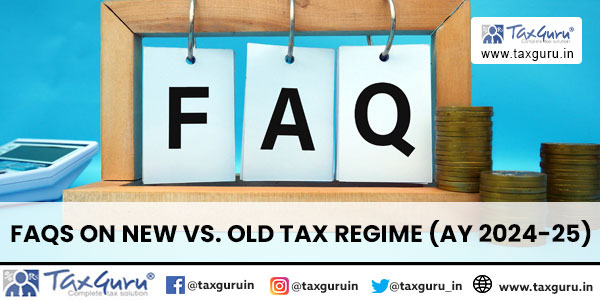Prashant Tripathi[1]
Introduction:
The Securitization and Reconstruction of Financial Assets and Enforcement of Security Interest Act, 2002 (SARFAESI Act, 2002) was enacted for quick recovery of secured debts without the intervention of the court or tribunal. This Act enables a secured creditor i.e., a bank/financial institution to classify a borrower’s account as a Non-Performing Asset (NPA) and call upon the said borrower to discharge in full its liabilities within a period of 60 days failing which the secured creditor is entitled to take recourse to various measures provided under Section 13(4) of the SARFAESI Act, 2002 which includes taking of possession and sale of the mortgaged property. Any person who is aggrieved by any of the measures taken under Section 13(4) by the secured creditor, can challenge the same before Debts Recovery Tribunal (DRT) by filing a securitization application (SA) under Section 17(1) of the SARFAESI Act within a period of 45 days from the date of taking such measure by the secured creditor.
In many cases, where there is a delay in filing an SA, the applicants seek condonation of delay by filing an application under Section 5 of the Limitation Act, 1963. Whether DRT has the jurisdiction to allow application under Section 5 of the Limitation Act, 1963 and condone the delay in filing an SA has been the bone of contention before various Courts and conflicting judgments have been passed by Hon’ble High Courts across the country.
On 11.08.2022, the Hon’ble Supreme Court passed a judgment titled “Bank of Baroda & Anr. v. M/s Parasaadilal Tursiram Sheetgrah Private Limited”, Civil Appeal No. 5240/2022 which appears to have given a quietus to the conundrum prevailing around the competence of the DRT in condoning the delay in filing an SA.
In this article, we have analysed the impact of this judgment on the power of the DRT to condone the delay in filing an SA under Section 17(1) of the SARFAESI Act (hereinafter, the Act).
Analysis:
Section 17(1) of the SARFAESI Act empowers an aggrieved person to challenge a measure taken by the secured creditor under Section 13(4) thereof within 45 days from the date of taking such measure by the secured creditor. Further, Section 17(5) casts an obligation on the DRT to deal with the SA filed under Section 17(1) as expeditiously as possible and dispose it of within sixty days from the date of such SA. The proviso to Section 17(5) empowers the DRT to extend the said period for a maximum period of four months from the date of making such SA. Pertinently, the DRT is required to record its reasons in writing for extending the such period. Section 17(6) further states that if the DRT fails to dispose of the said SA within four months, then any party to the SA may apply to the Debts Recovery Appellate Tribunal (DRAT) for expeditious disposal of the said SA.
Section 17(7) of the SARFAESI Act empowers the DRT to dispose of an SA in accordance with the provisions of the Recovery of Debts and Bankruptcy Act, 1993 (hereinafter, RDB Act). Section 24 of the RDB Act states that the provisions of the Limitation Act, 1963 shall, as far as may be, apply to an application made to the DRT. The use of the phrase ‘as far as may be’ in Section 24 of the RDB Act makes it clear that the provisions of the Limitation Act, 1963 do not apply to the provisions of the Act in their entirety.
In order to understand the scope of the applicability of the provisions of the Limitation Act, 1963 reliance can be placed upon the judgment of the Division Bench of the Hon’ble High Court of Calcutta in Akshat Commercial Private Limited & others v. Kalpana Chakraborty & Others[2] where the Hon’ble Court has dealt with the question as to whether the provision of Section 5 of the Limitation Act for condonation of delay applies to a proceeding under Section 17 of the SARFAESI Act. After a detailed analysis of relevant statutory provisions and judgments[3], the Hon’ble Division Bench held that since proceedings under Section 17(1) of the SARFAESI Act are original in nature like a suit, Section 5 of the Limitation Act does not apply to such proceedings and therefore, DRT does not have jurisdiction to condone delay by allowing the application filed under Section 5 of the Limitation Act. It is to be noted that though Special Leave Petitions (Civil) no. 17529-31/2010 were filed against the judgment of the Hon’ble High Court and leave was granted by the Hon’ble Supreme Court, however, in view of the settlement between the parties, the said appeals were disposed of by the Hon’ble Supreme Court vide order dated 15.12.2021.
Similarly, the Division Bench of the Hon’ble Madras High Court in Velar Engineering Works Private Limited v. The Authorised Officer/Chief Manager, Indian Bank, Kanchipuram & Others[4], has held that Section 5 of the Limitation Act has no application in the original proceedings like a suit before the DRT and therefore, the DRT has no jurisdiction to condone the delay in filing an SA by invoking Section 5 of the Limitation Act. It is pertinent to note herein that the SLP(C) Diary No. 7023 filed against the judgment of the Hon’ble High Court was dismissed by the Hon’ble Supreme Court vide order dated 09.07.2020.
Similar observations have been made by a Single Bench of the Hon’ble Kerala High Court in Indian Bank v. George[5], and the Division Bench of the Hon’ble Punjab & Haryana High Court in Morion Chemicals Limited & others v. UCO Bank & others[6]. It is worth noting that Special Leave Petitions filed against the judgments of the Hon’ble Kerala High Court[7] and the Hon’ble Punjab & Haryana High Court[8] are pending before the Hon’ble Supreme Court, however, the operation of the judgments has not been stayed.
In the recent case of Parasaadilal Tursiram (supra), the Ld. Debts Recovery Tribunal (hereinafter, DRT) had initially dismissed the SAon the ground that it was filed beyond the statutory period of 45 days provided under Section 17 of the Act. However, on a review application filed by one of the parties, it recalled its order of dismissal and allowed the review application. Against this order, an appeal was preferred by the bank/secured creditor before the Ld. Debts Recovery Appellate Tribunal (hereinafter, DRAT) which in turn allowed the appeal with the observation that there was no error apparent on the face of record for the DRT to invoke the review jurisdiction and recall its order dismissing the SA. The order of the Ld. DRAT was challenged by the borrowers before the Hon’ble High Court of Allahabad which stayed its operations. But when the matter reached the Hon’ble Supreme Court, the order of the High Court was stayed by it, and thereafter, vide its judgment dated 11.08.2022, the Hon’ble Supreme Court has held that the High Court was not justified in staying the operation of the order passed by the Ld. DRAT.
A perusal of this judgment makes it clear that the Hon’ble Supreme Court was of the view that the DRT does not have jurisdiction to condone the delay in filing an SA. In other words, we can say that the statutory time period of 45 days provided under Section 17(1) of the SARFAESI Act is mandatory and no discretion has been conferred upon the DRT to extend such period.
In addition to the reasoning given in the aforementioned judgments, the authors are of the view that there is one more reason why the legislature has not conferred upon the DRT the power to condone the delay in filing an SA under Section 17 of the Act. In the humble opinion of the authors, the provisions of the Act and rules[9] framed thereunder cast upon the secured creditor an obligation to strictly comply with the said provisions and the rules and serve upon the borrowers’ notices in advance before taking measures under Section 13(4) of the Act read with Rule 8 and 9, thus giving the borrowers ample of time and opportunities to assail said measure within a period of 45 days. In other words, the provisions of the Act and rules framed thereunder ensure that the borrowers have advance notice of the proposed measures to be taken by the secured creditor, and for this reason, also the DRT does not have jurisdiction to condone the delay in filing an SA.
Conclusion:
In the opinion of the authors, the recent judgment of the Hon’ble Supreme Court in Parasaadilal Tursiram (supra) has given a quietus to the conundrum which existed hitherto on the power of the DRT to condone the delay in filing an SA after the statutory period of 45 days provided under Section 17(1) of the SARFAESI Act. While it would be interesting to note the outcome of various special leave petitions pending on this issue before the Hon’ble Supreme Court, the dismissal of the SLP in Velar Engineering (supra) by the Hon’ble Supreme Court, and its recent judgment in Parasaadilal Tursiram (supra) seems to go in line with the object of the Act and settles the position that DRT does not have jurisdiction to condone the delay in filing an SA.
x-x-x-x
[1] Authors-Prashant Tripathi & Sampanna Pani, Advocates and Partners, Pani & Tripathi Law Offices, New Delhi. Views are personal.
[2] MANU/WB/0184/2010
[3] Mardia Chemicals Limited and Another v. Union of India and others, MANU/SC/0323/2004 & Transcore v. Union of India and Another, MANU/SC/5319/2006
[4] MANU/TN/5046/2019
[5] MANU/KE/3265/2020
[6] MANU/PH/0828/2021
[7] SLP(C) No. 4754/2021
[8] SLP (C) No. 16681/2021
[9] Security Interest (Enforcement) Rules, 2002
























